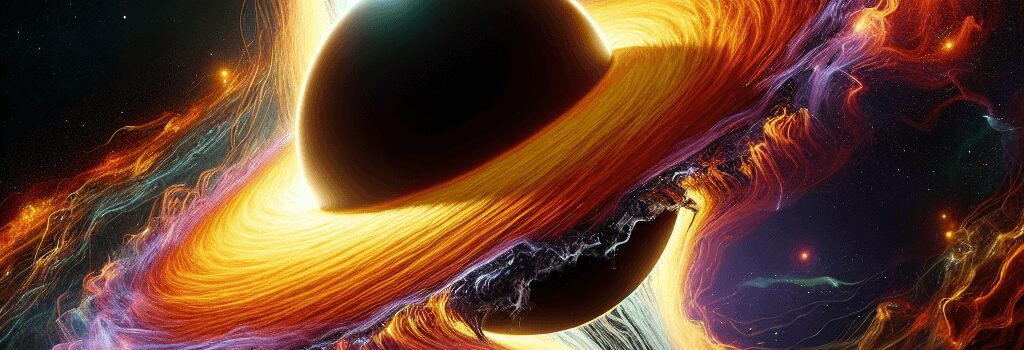Giant Star Shredded by Off-Center Black Hole

In early 2024, the Zwicky Transient Facility (ZTF) flagged an anomalous optical flare—AT2024tvd—located more than 2,500 light-years from the host galaxy’s nucleus. A year of multiwavelength follow-up has confirmed this flare as a tidal disruption event (TDE), marking the first TDE identified at visual wavelengths around a supermassive black hole (SMBH) dwelling well off its galactic center. Meanwhile, a second, even more massive SMBH at the core continues to feed steadily on ambient gas.
Discovery and Multiwavelength Confirmation
- Optical Detection: ZTF’s wide-field CCD cameras scan the entire northern sky every two days. Difference imaging algorithms highlighted AT2024tvd’s +15 mag flare at 480 nm, yet its offset position excluded it from automated TDE triggers.
- Ultraviolet and X-ray Observations: The Neil Gehrels Swift Observatory measured a persistent UV blackbody temperature of ~30,000 K for >200 days, while Chandra detected a moderate X-ray luminosity (~1042 erg/s), below supernova expectations but consistent with TDE fallback rates (Ṁ∝t⁻⁵ᐟ³).
- Radio Imaging: The Karl G. Jansky Very Large Array (VLA) resolved both the off-center flare and the galactic core, revealing synchrotron emission from shock-accelerated electrons at ~1.4 GHz.
- High-Resolution Optical: Hubble Space Telescope’s Wide Field Camera 3 pinpointed no pre-existing AGN at AT2024tvd’s coordinates, confirming a stranded SMBH of mass ~10⁶.7 M☉.
Galactic Merger Remnants and Dynamical Friction
Massive galaxies grow via hierarchical mergers. Each progenitor can bring its own SMBH, leading to a population of “wandering” black holes. Dynamical friction against stars and dark matter eventually drags these SMBHs toward the center, but this process can span 108–109 years. In dense merger environments, three-body interactions can gravitationally slingshot a lighter SMBH into elongated orbits or even eject it from the galaxy entirely.
- Timescales: Chandrasekhar’s formula for dynamical friction tdf ≈ (1.17×1010 yr) × (σ/200 km/s)3/(M/10⁸ M☉) suggests that 10⁶–10⁷ M☉ SMBHs can remain at ∼kpc scales for >10⁸ yr.
- Gravitational Slingshots: In triple SMBH encounters, conservation of energy can propel the lowest‐mass member to velocities ≥500 km/s, explaining offsets of several kiloparsecs.
Accretion Physics and Emission Mechanisms
When a star ventures within the tidal radius RT ≈ R*(MBH/M*)1/3, differential gravity overcomes stellar self‐gravity. The debris forms an accretion disk, converting gravitational potential energy into radiation with efficiency η≈0.1. Key diagnostics:
- Fallback Rate: Ṁ(t) ∝ (t − tD)−5/3, driving the light curve’s decline.
- Spectral Lines: Broad UV emission from carbon, nitrogen, and helium indicates photoionization in a high‐velocity (∼10⁴ km/s) stream.
- Radiative Efficiency: The X-ray faintness points to a slim or super‐Eddington disk, possibly launching winds that reprocess X-rays into optical/UV bands.
Implications for Gravitational Wave Astronomy
Stray SMBHs are promising LISA targets. As they spiral back toward galactic centers, they emit low‐frequency gravitational waves (10−4–10−1 Hz). Monitoring TDEs around off-center SMBHs offers electromagnetic “tags” to correlate with LISA’s future detections, enabling multimessenger constraints on:
- SMBH Masses and Spins: GW inspirals measure chirp masses, while TDE lightcurves constrain disk formation physics.
- Merger Histories: Off-center TDE rates trace the frequency of past galaxy mergers and three‐body interactions.
Future Prospects and Observational Strategies
Identifying off-center TDEs requires decoupling automated pipelines from the assumption of nuclear location. Upcoming surveys will play key roles:
- Vera C. Rubin Observatory (LSST): With 6.7 deg² field of view and deeper limiting magnitude (r∼24.5), LSST will discover thousands of TDEs/year, including ∼10% at kiloparsec offsets.
- Euclid and Roman Space Telescopes: Near-IR capabilities will probe dust-obscured nuclei, distinguishing true off-center SMBHs from reddened central flares.
- High‐Resolution Interferometry: Next-gen VLBI and X-ray interferometers could directly image event‐horizon scales to confirm SMBH displacements.
AT2024tvd exemplifies how off-center SMBHs continue to shape galaxy evolution and offers a roadmap for integrated optical, radio, X-ray, and gravitational‐wave studies in the coming decade.
References and Further Reading
- Yao, Y. et al. “AT2024tvd: A Kiloparsec-Offset Optical Tidal Disruption Event.” Astrophysical Journal Letters (in press), arXiv:2502.17661.
- Komossa, S. “Tidal Disruption of Stars by Supermassive Black Holes: Status of Observations.” Journal of High Energy Astrophysics, 2015.
- Gerosa, D. & Dvorkin, I. “Multimessenger Signatures of Wandering Black Holes.” Monthly Notices of the Royal Astronomical Society, 2024.